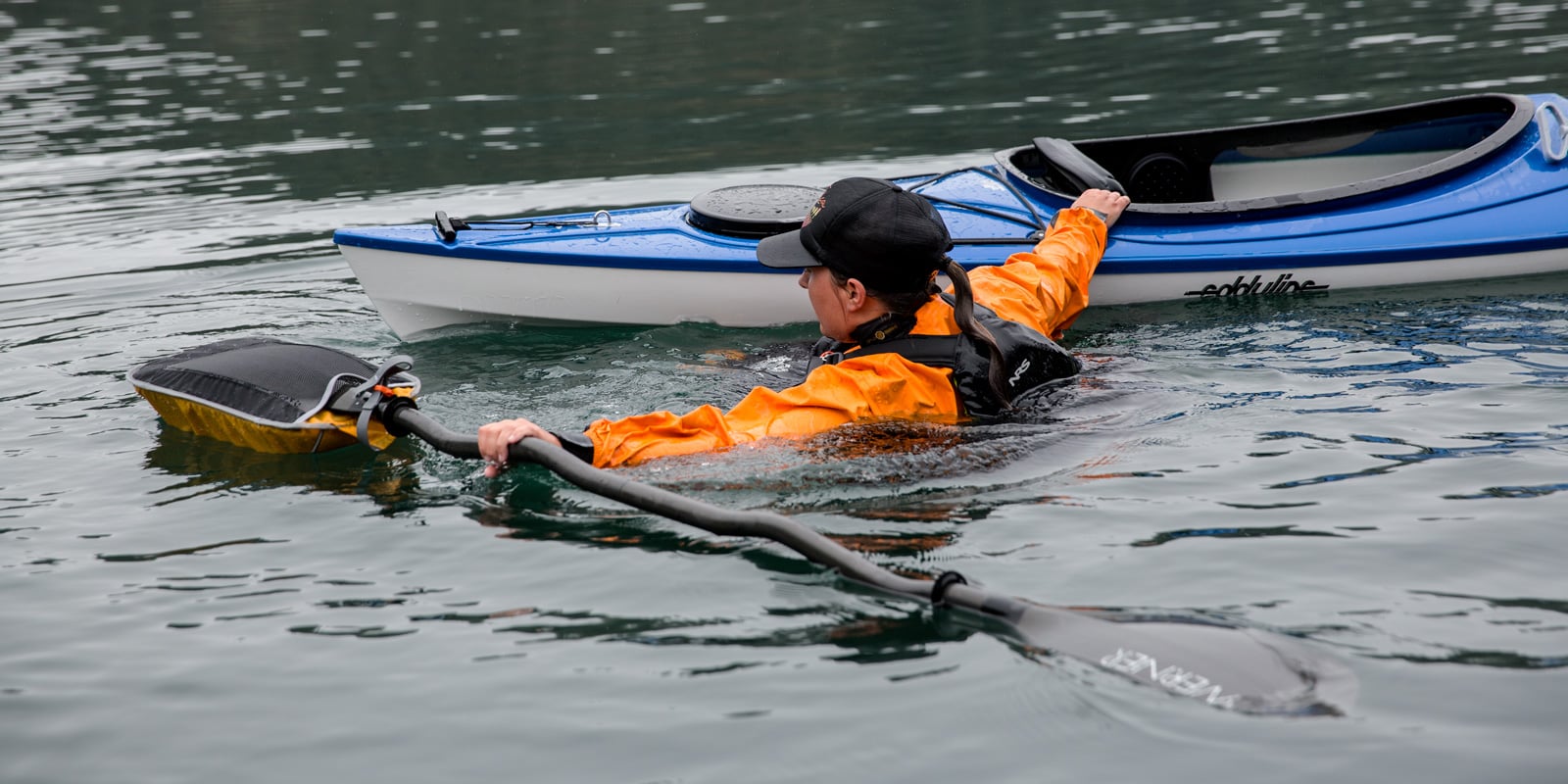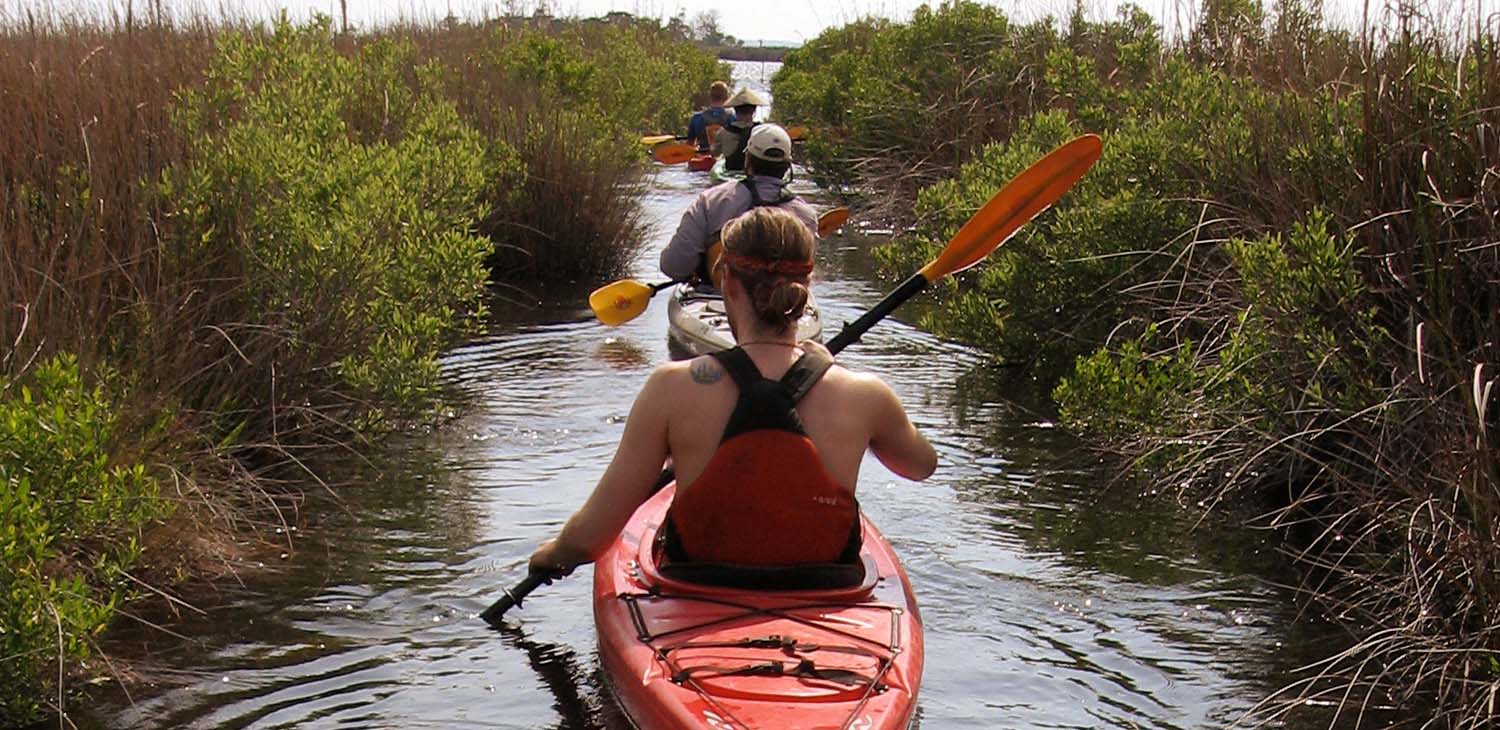
Explore the Great Outdoors with Your Child in a Single Kayak with a Built-in Seat!
When you go kayaking, bring the kids along putting him kayaking with child seat. You may have a satisfying experience if you put some thinking into it and effort into organizing it. Just bear in mind that baby steps are best and that the best way to reduce stress is to eliminate surprises unless they are those that lead to discoveries.
Paddling with Kids: How to Make It a Success
Paddling with kids can be a fun adventure, but safety is key. Here's what you need to know before taking the plunge.
Who's In and Who's Out
From experienced paddlers to curious kids, anyone can join in on the fun. But safety is paramount. Keep reading for more.
Choose Your Destination Wisely
Water that is calm with a low current is the best starting point for beginners. As you gain more experience, you can explore new locations.
Tips for the Perfect Paddling Spot
Pick a spot with plenty of options, and take time to discuss tides, currents, and other safety concerns with your group.
Timing Is Everything
For the initial voyage, plan for a short loop of about one-third of the distance you'd go with adult paddlers. Build up from there as skills improve.
Practice Makes Perfect
Swimming and kayaking courses can be a fun way to build skills before the trip. Try kid-friendly workouts to improve your paddle stroke.
With these tips in mind, your family can enjoy a safe and fun paddling adventure together.
Making the best choice for your family
Boat or canoe?
If you're planning a paddling adventure with your family, choosing the right watercraft can make all the difference. But with so many options out there, how do you know which one is right for your family? Let's break it down.
Consider your destination and your child's age and experience when making your choice. Comfort, seating, time constraints, and access to the water should also be taken into account. Remember, the process of paddling should be as important as the end result.
For children between 4 and 7, kayaks work well but won't provide much propulsion, so distance will be limited. Canoes, on the other hand, are stable, offer plenty of space for gear, and don't restrict movement, making them an excellent choice.
By around age 8, most children are ready to paddle the bow of either a kayak or a canoe. Canoes are still an option and can be just as effective as kayaks.
Regardless of which watercraft you choose, safety should be a top priority. Practice wet exits, bracing, and other maneuvers. Check out our guide on "How to Edge Your Kayak and Do a Brace Stroke" and "How to Wet Exit from a Kayak."
For cooler waters, a decked kayak or a canoe with a spray deck is the way to go. Have your child sit in the bow or middle until they're skilled enough to handle a single boat. When the water is calm, sitting in the middle is acceptable.
For warmer waters, a sit-on-top kayak is a great choice, providing a comfortable, fun ride for the family. Some can be inflated for easy storage, but remember not to use them for crossings that are too far from shore. Whether you choose a canoe or kayak, make sure to have a great time and enjoy your family adventure on the water!
Paddle or Duff: What's Best for Your Family?
Choosing between a single or double kayak can be a tough decision, especially when considering your children's ages, physical ability, and paddling experience. But fear not, we've got some advice to help you make the right choice.
If you're introducing your kids to paddling for the first time, "duffing" might be the way to go. Duffing refers to riding in the center compartment of the boat and is an excellent way to get them comfortable and familiar with the kayak. While they won't contribute to the boat's propulsion, they'll still get to experience the joy of being on the water.
Here are some age recommendations to consider:
- Duffing in a kayak or canoe: Children under eight years old.Bow paddling in a double kayak or canoe: Minimum age of eight.Bow riding or paddling in a double kayak or canoe: Ages four to seven.Single small kayak: Ages 10 and older (if skilled).Single medium kayak: Ages 14 and older (if skilled).Single small canoe: Ages 14 and up (if skilled).
No matter which option you choose, it's essential to make sure your child is comfortable and confident in the water. Don't forget to teach them the necessary safety maneuvers and techniques, such as wet exits and bracing. With a little practice and patience, you and your family will be paddling like pros in no time.
Paddle Sizes
Because the paddle is your primary means of interaction with the water, how it feels in your hands is critical. Children's kayak paddles come in various lengths and widths; if you're shopping for one, go for one that's approximately 200 centimeters long and has a thin shaft. When using canoe paddles, the handle should be positioned to rest on the child's foot, and the blade should be about nose level.
Protective Gear
Don't skimp on safety. Everyone aboard a boat less than 26 feet long is required by law to wear a life jacket. Find a model that the United States Coast Guard approves, and follow the requirements regarding usage and dimensions. PFDs come in sizes appropriate for newborns weighing 8-30 lbs., children weighing 30-50 lbs., and teens weighing 50-100 lbs (50-90 lbs.). The neck pad on an infant life jacket is essential for ensuring that the kid's head is held in the appropriate posture if the youngster capsizes. In addition to that, the crotch strap should be secured at all times.
The Use of Lines and Floats
To effect a rescue, lines and floats could be utilized. A paddler should be familiar with the safety procedures associated with them, such as the wet-exit method mentioned previously (a way to climb back into the cockpit after leaving it under forced conditions, such as during a capsize or an emergency).
Do not rely excessively on these materials, as well as on books or films, as a substitute for safety. Enroll in lessons to get some practice!
The following components make up the safety line and float gear:
- Paddle float for each adult
- A disposable bag for each adult.
- Each boat will need its tow line.
Related Kayak With Toddler
Trying to Sell the Trip to the Children
As is the case with any activity, the more zealously you discuss kayaking with your children, the greater the likelihood they will share your excitement about the action. Take the boat(s) out into the lawn or driveway (with a soft under-cushion), and let the more minor children gently play in it. This is especially helpful for children who are just getting used to paddling.
Extra Suggestions:
- Do research before going on your journey, and bring along some laminated animal charts, local field guidebooks, and tide and current charts. Young people interested in science often find these to be engaging conversation starters.
- Make the excursion cater to the specific interests of the children. Please include them in the process of picking and choosing what to do while you are out on the wet trail. They should be allowed to bring a friend if it is appropriate.
- If at all possible, emphasize the tradition. Bring out the maps and photos from your previous travels, and tell tales about the exciting experiences.
Preparing My Bags for the Trip
Suppose you are familiar with how to pack for yourself. In that case, you are probably already familiar with how to pack for your children. It is essential to understand who is responsible for packing what clearly. Along with the other adults, divide the responsibility of packing up evenly between the two of you. Get the youngsters involved in this particular aspect of the journey.
Food and Drink are Essential.
Think about bringing along some nutritious foods that are also easy to transport
Such as smoked salmon, hard-boiled eggs, apples, mangoes, fresh red peppers, dried fruits, and nuts (pine nuts.
Pumpkin seeds are high in calories and travel well), cheese, dried vegetables like carrots and tomatoes, and nutritious cookies and bars.
Additionally, staying hydrated is very crucial. Maintain ready access to a water bottle and make it a point to stay hydrated by taking frequent sips throughout the day. Paddling is a strenuous activity, and when combined with the fact that sunlight is reflected off the water, this might result in a greater need for fluids than you imagine.
Because water pillows can be loaded to their maximum capacity while still readily fitting under the seats, which is where you want to retain the weight of the paddle boat, they are the most efficient way to transport water for paddle craft.
Clothing
The key to wearing comfortable clothing is to layer it with water-resistant and breathable materials, such as rashguards, merino wool, polyester, and weather-resistant shells. Bring additional pairs of pants for children under seven, as they tend to become dirty and wet no matter what. Cotton shouldn't even be considered an option until the temperature is exceedingly high.
Some Essentials for Kids:
- A hat with a wide brim protects from the sun and the rain (waterproof, breathable "sombreros" are perfect). These are durable and can withstand either the sun or the rain.
- Waterproof boots with a height between the calf and the knee can be worn even when the weather is warm. Sandals can be worn in regions that are not hazardous to one's feet, such as those that are devoid of barnacles or broken glass.
- Raingear with an appropriate fit
- Clothing designed to shield from the sun (UPF rated)
- Articles required in the bathroom
Additional Suggestions for Packing
In addition to the list for adults, the following are recommendations for children aged 5 to 9:
- Binoculars or a monocular (a monocular is more accessible for kids to use)
- Books
- Fishing poles or poles
- Notepad and pencil are included.
- Tiny tents that can be popped up for long days and overnight stays
For people of all ages:
- Everyone should bring their water bottle (avoid using disposable ones) and a water pouch with more water than they believe they will require.
- Sunglasses that have a good reputation and are comfortable to wear.
- Warning sirens and whistles
- Cushioned seating or seats that are positioned low can help reduce the center of gravity.
- Spray decks and skirts (cover the open compartment regions) (covers the open compartment areas).
- I was hauling and throwing rope.
- Individual charts and navigational aids.
- Songbooks.
- Picnic blankets or tarps in case it rains.
- On the duffer, a sun or rain umbrella is included.
The Day of the Journey (Pre-launch)
Before getting in the water, you should always go over the safety protocols for a wet exit with adults and children. Take your time, and be sure to review some hypothetical scenarios before moving on. You want the answers to your queries to be provided in advance.
After the boats have been loaded, ensure the children have used the restroom and put on their sunscreen before pulling away from the dock. Allow plenty of time to unwind and reconnect after loaded boats. It is easy to forget that loading a boat eats up calories, and you don't want to start the journey hungry. Therefore, offer a handful of gorp to the people helping you load the boat.
Activities to Partake in While Out on the Water
- Move at a pace that is approximately one-third of your typing speed and try to avoid becoming separated. Maintain constant eye contact with each child and adult in the group. If you have more adults who want to go their way, that is perfectly acceptable; nevertheless, the more turbulent the water is, the closer all boats should be to one another. However, it is essential to avoid crowding, especially with strong currents and waves.
- To teach, discuss the movement of the water with your young paddler while demonstrating the appropriate response. Techniques such as drawing into an eddy, bracing against a wave, and navigating the currents are examples of what can fall under this category.
- Provide rules: Regarding the regulations, maintain clarity and simplicity—no standing, no leaning, etc. Instruct the children to list the guidelines and ensure they are aware of the repercussions for violating the norms.
- Empower: Let the paddler moving the slowest take the lead, then switch. Children would find it very interesting if this were turned into a game. If you are sharing a double kayak with a younger or less experienced paddler, take your time and give them plenty of opportunities to rest. Give the tiny slackers a chance to paddle once in a while. They may only want to do it for a few minutes, but doing so will make them feel valuable and provide the practice.
- Take plenty of pauses and look at the beautiful environment. Please stay away from performance critique unless it's directly related to safety. Always applaud good paddling. Tips, demonstrations, and practice should be given, but in-depth training should be left for later, when you are back on land, so as not to ruin the moment. On paddling outings, the beach is just as important as the water, so make sure you take some time to enjoy it.
If Things Don't Go According to Plan
While you are at sea and kayaking with child seat, you should be prepared for a wide variety of occurrences that you might not have imagined. Therefore, you should roll with the punches, retain a positive attitude, and persevere. It would help if you didn't let the whiney slacker bring you down. Children who are not accustomed to having to create their fun face a formidable adversary in the form of boredom. This is especially true for slackers, who could gain something from paddling for a few minutes.
To add excitement to your day, why not try playing a game like a tag or following the leader? Perform a song, appoint someone to be the navigator, or hand out snacks. Suppose you've tried switching to a new paddle or altering your paddling stroke, but neither of those solutions has helped. In that case, you might consider taking a break if it's an option. Make an offer to do most of the paddling for at least a portion of the trip, if not the entire journey duration. Don't rule out the possibility of offering to pull the exhausted paddler if you see them in a single kayak.
Make good on your promise to reward the children with whatever you told them you would give them earlier in the day. This could include taking them to their favorite restaurant for dinner or giving them an extra hour to talk to their friends on the phone about their experience. If you're going camping, you must bring some s'mores with you.

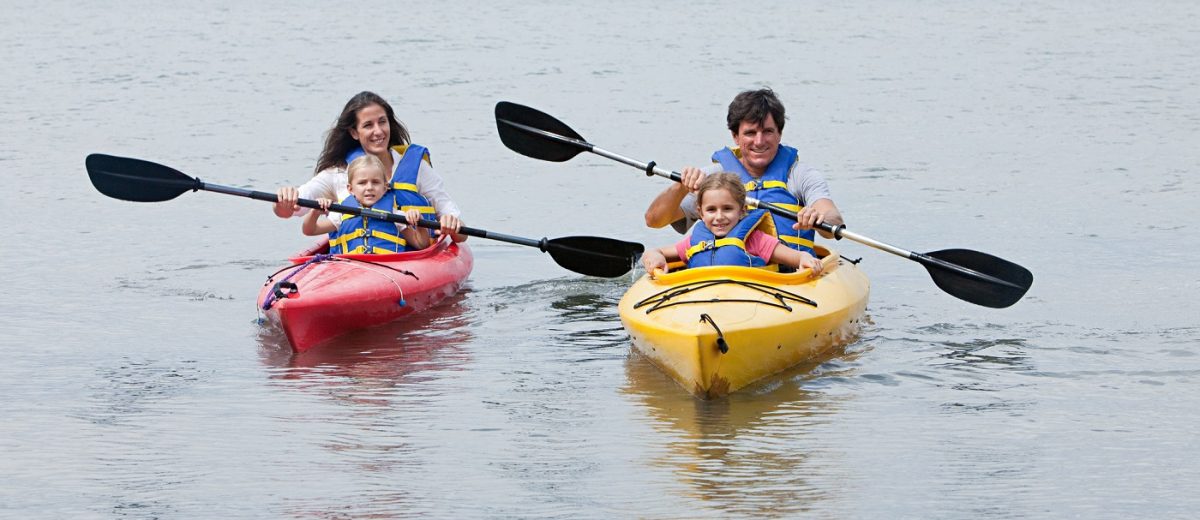
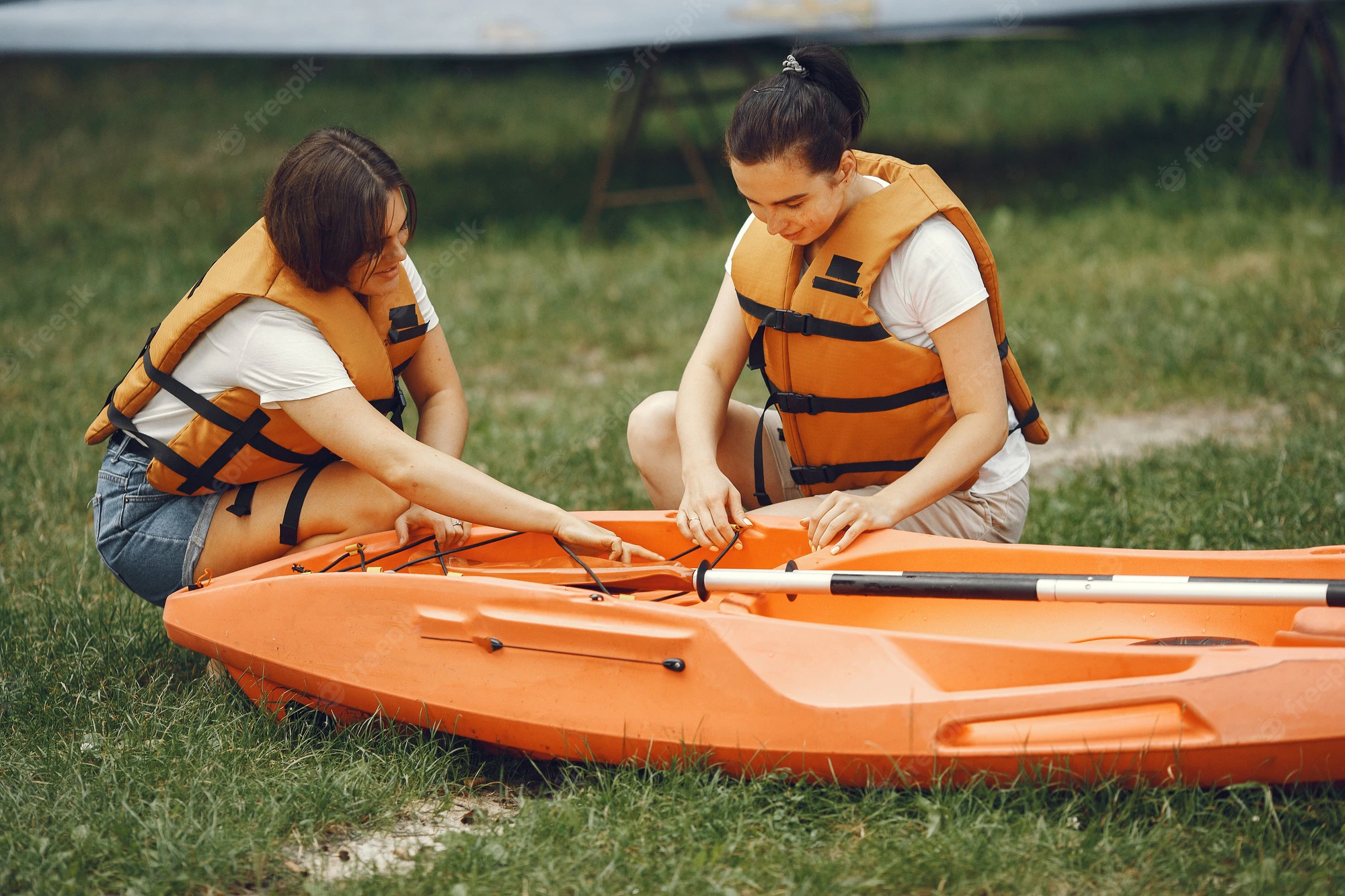
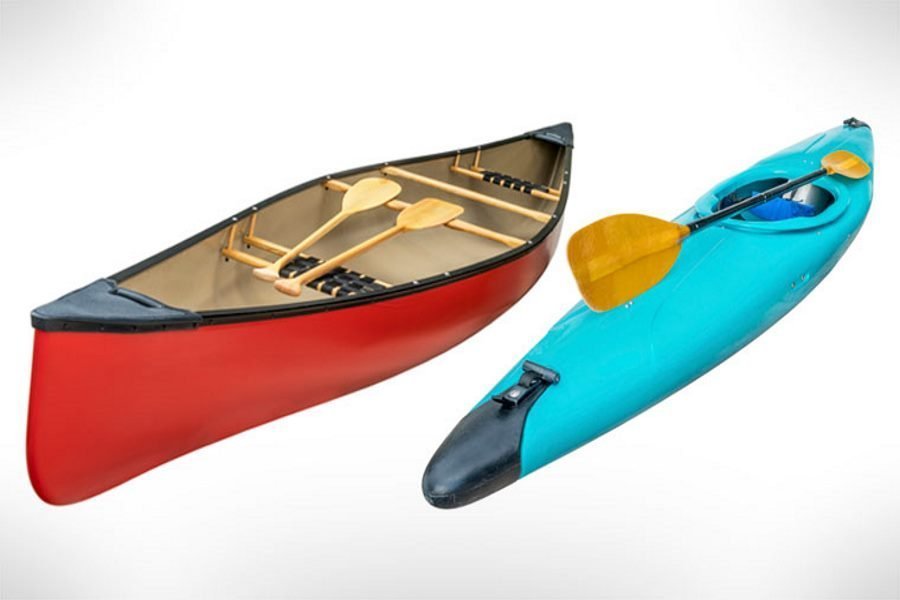
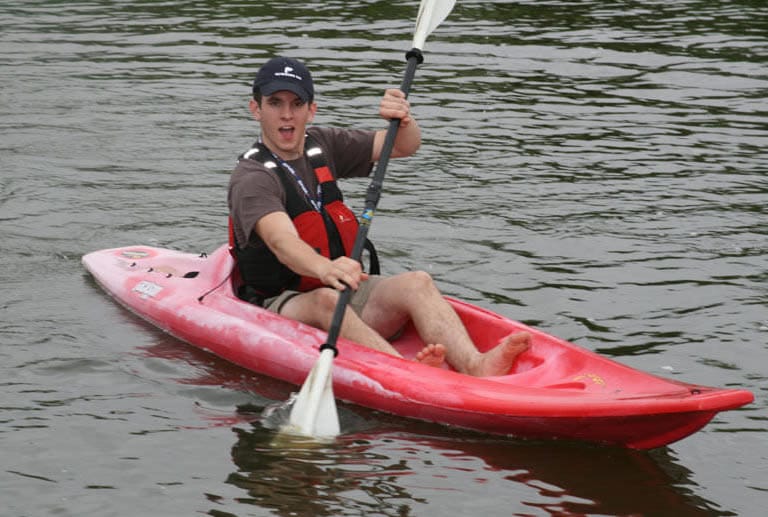
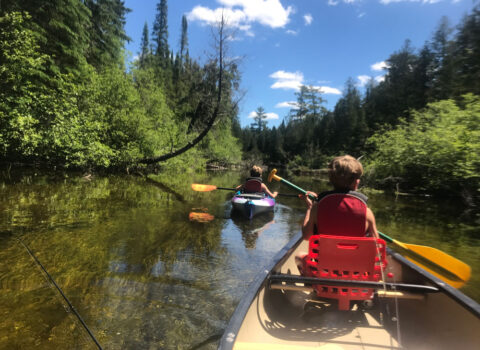
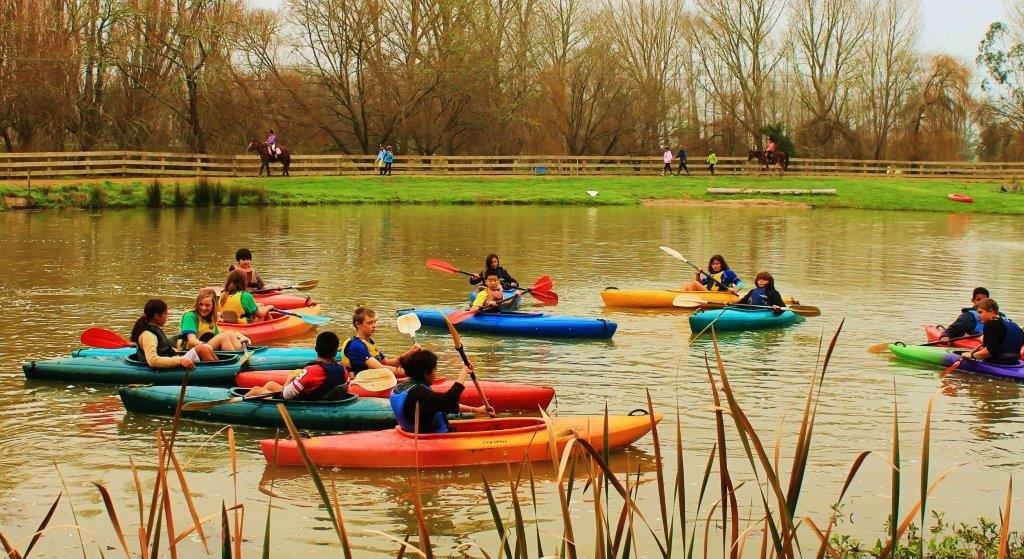
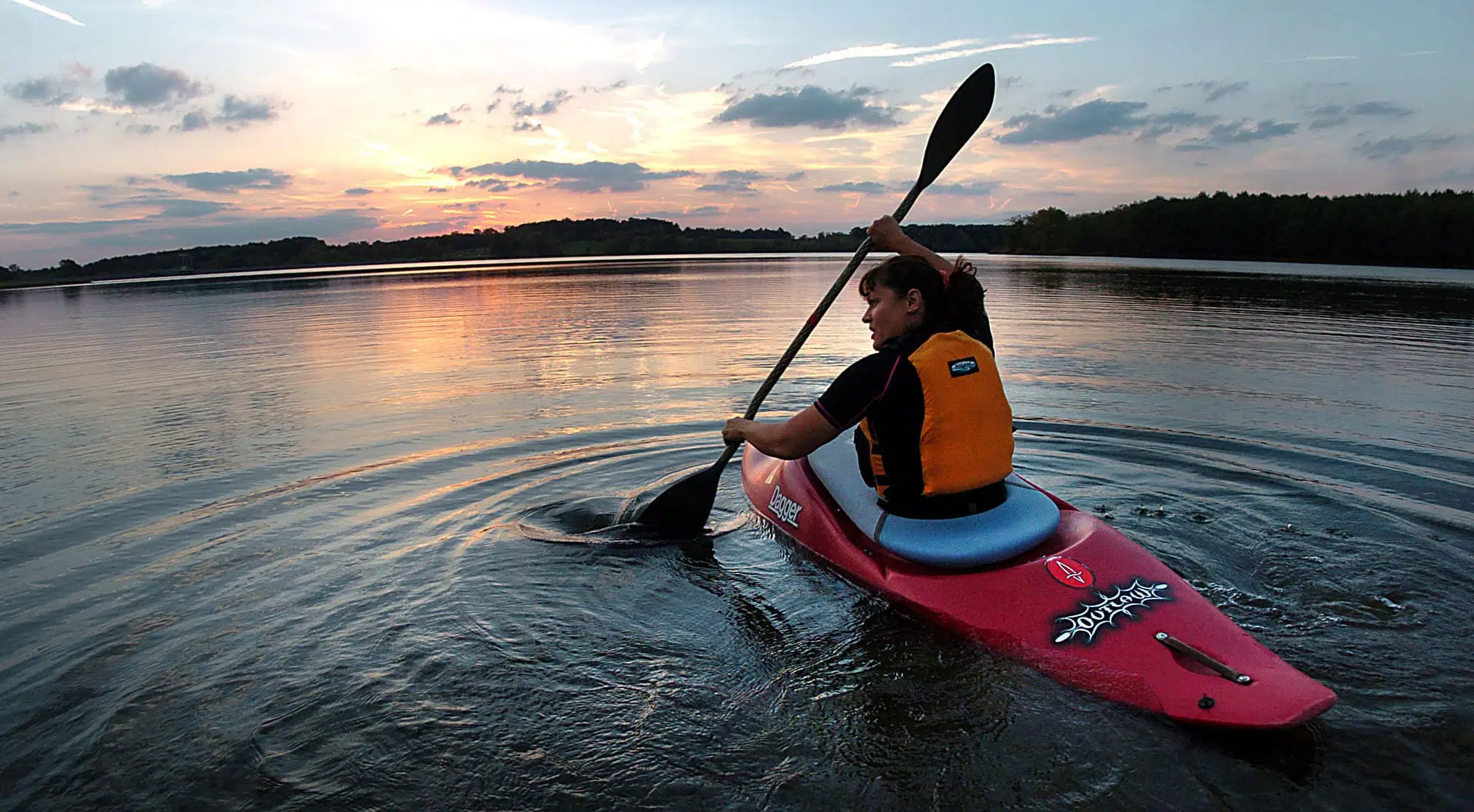

![Can You Kayak While Pregnant? [Updated 2026]](https://shared-bucket-websites.s3.amazonaws.com/HowtoSurfWhilePregnant-1655756453379)
